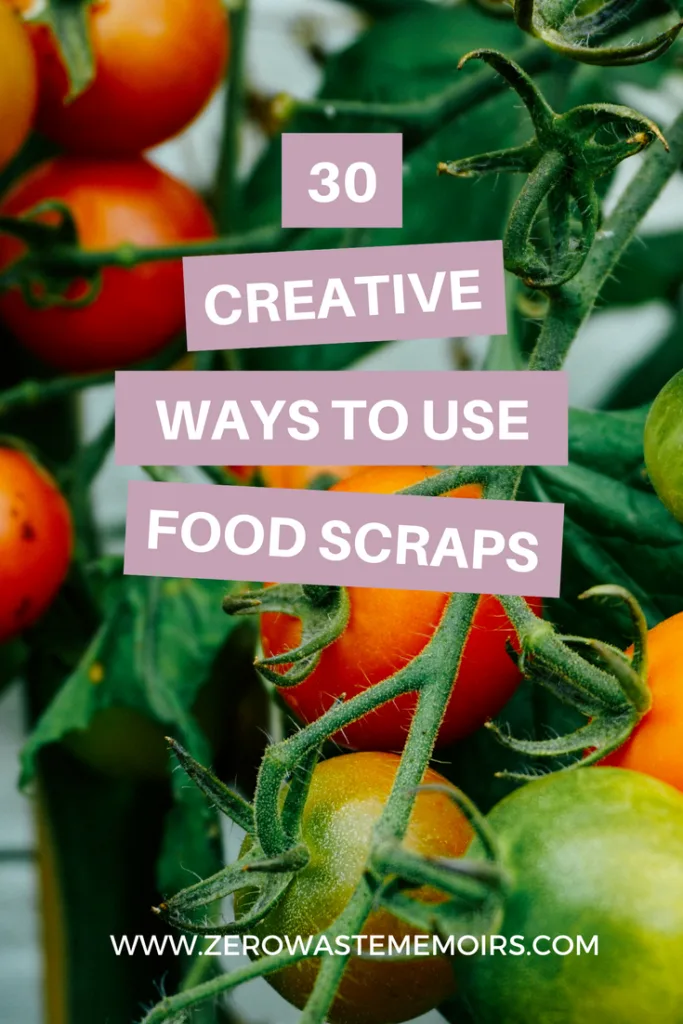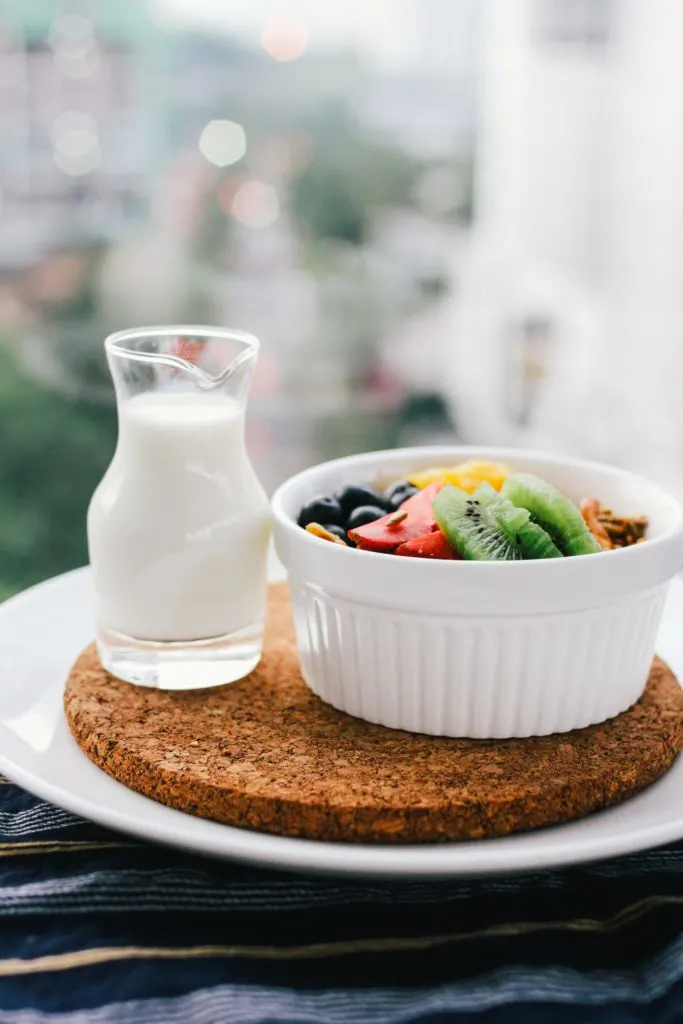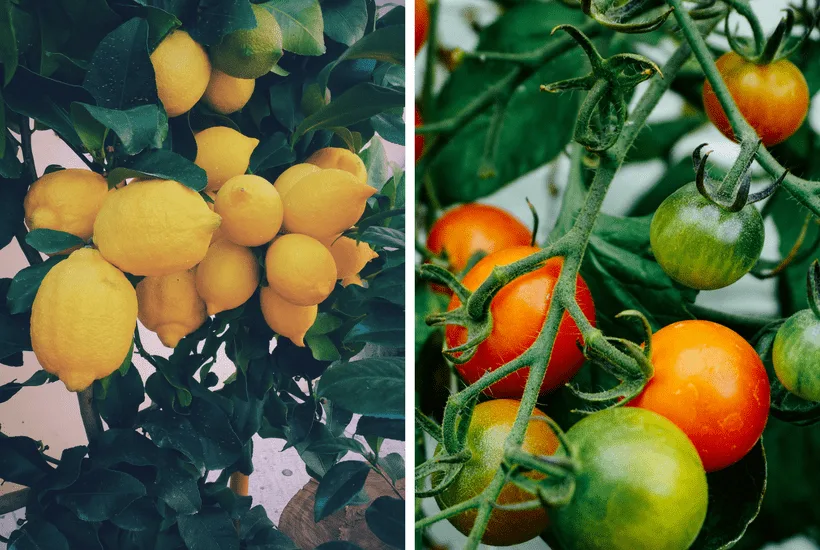Did you know that approximately 25-40% of all food grown, processed, and transported in the US will never be eaten? Read on to learn how you can cut down on your personal food waste and discover the many miraculous ways you can use food scraps too!

The other day I came across a statistic that absolutely blew me away: An estimated 25-40% of all food grown, processed and transported in the United States will never be eaten. I don’t know about you, but that is really difficult for me to hear.
Still, it’s not surprising. Just go one day with your eyes opened to the reality of food waste and you will be absolutely floored by the sheer volume of beautiful food that gets sent to landfill.
There are all sorts of strategies you can use to reduce food waste and save money. You can:
- Shop more realistically and buy what you know you’ll eat.
- Cook in reasonable portions for your needs.
- Actually eat those leftovers you saved.
- Avoid a cluttered fridge and pantry (read my guide to decluttering your pantry).
- Treat sell-by/expiration dates as guidelines, not rules.
- And freeze food you won’t be able to eat in time.
But today I want to share with you some super easy and practical tips for using those food scraps before they get sent to the compost pile.

30 Creative Ways to Use Food Scraps
With these creative uses for your food scraps, you’ll drastically reduce the amount of waste that goes into your trash can or compost bin.
Vegetable Scraps
- Save carrot peels, potato skins, and celery tops to add to a homemade stock or broth.
- Make yummy potato peel chips out of your potato scraps.
- Retain the seeds, pits, and cuttings of your veggies and regrow them at home – saving you money on seeds or seedlings.
- Save veggie peels for all-natural fabric dye. Use beet ends for reds and purples, red cabbage for blues, yellow onions for oranges, and spinach for greens. Have a look around Pinterest for inspiration!
- Place cucumber peels at entrance points in your home to deter ants.
- Keep the green “trunks” of your broccoli. They make for a delicious soup. Just search “broccoli stalk soup” for inspiration.
- Mince and freeze leftover herbs in oil or water before they go bad.
- Don’t throw away the delicious guts of your Halloween jack-o-lantern. Scoop out the insides and blend into pumpkin puree for pie.
- Hold onto tomato peels, cores and juice and turn into a tomato sauce. Just blend and simmer with oils and spices of your choice.
- Reserve kale stalks for soups that call for chopped greens.
Fruit Scraps
- Make jam from apple peels and cores. You can also do this with strawberry tops and apricot peels.
- Rub the soft side of a banana peel on the leaves of houseplants to shine them up and remove dust – this is great for plant health.
- Make a homemade air freshener. Sometimes I save leftover fruit scraps and boil in a little water on the stove to make my home smell sweet and fresh.
- Dry lemon or orange peels, then add them to your homemade vinegar cleaning solution. The citrus oils will help dissolve grease and add some antibacterial power.
- Drop a few banana peels into a bucket of water and let sit for a few days. This will become a potassium and phosphorus-rich “compost tea” for your garden and house plants.
- Toss a couple of citrus peels down the garbage disposal to remove the stink.
- Turn apple peels into a sweet apple tea.

Bread Crusts & Crumbs
- Turn dried bread crusts into croutons and breadcrumbs. A yummy addition to your soup!
- Use a small, dried bread crust to soak up oils and scrub hardened food from your cast iron pans.
- Add a bread heel to your brown sugar container to soften it and make it scoopable again!
- Save your cracker crumbs to top a casserole. Delicious!
Other uses for food scraps
- Hold onto used fine coffee grounds and use as an exfoliant – just whip up a DIY face or body scrub.
- Are you an almond milk fan? After making your almond milk, dry your leftover almond pulp in the oven then grind it into almond flour!
- Turn wine that has gone bad into red wine vinegar, then use on salads or for cleaning. This process may take several months but it’s a fun project.
- Preserve used cooking oils in a jar, then make suet for the birds during the winter. This can be a great craft project to do with kids as a family!
- Cook with old wine before you pour it down the drain. It won’t make you sick and is a great addition to simmering dishes like stews or risottos.
- Use dried-out cheese that has not yet gone bad to make macaroni & cheese. You’ll never know the difference!
- Grind cleaned and cracked eggshells into a calcium powder for use in the garden or to remove limestone deposits in your bathroom.
- Use your tea bags twice. Add a couple of used ones together and you’ll have a tea strong enough to brew.
Do you have any clever uses for food scraps in your back pocket? Share your knowledge in the comments below!

Brian
Friday 13th of August 2021
I highly suggest making use of overripe fruits for making jams and syrups, especially berries since their sugar level just doubles when overripe. You can also make banana bread from overripe bananas.
Kerry
Saturday 19th of June 2021
I have used veggie scraps for soups. I put them into my food chopper and then freeze for veggie base. Others I throw into my garden or around my trees and plants. Any bread scraps make great croutons including rye. I season and bake them in my toaster oven then freeze. Good on soups or salads. It's a great crunchy snack too. Any unused bread crumbs I have I feed to the wild birds outside. They love them. Dog biscuit crumbs too.
J Watson
Monday 13th of April 2020
I save the waste from juicing fruit and veg in quart size Ziploc or Hefty bags, then freeze it to add to slow cooker curries or stews to help thicken the sauce and to add more richness to the dish. I also add it to smoothies Because the juicing waste is uncooked it is safe to freeze, but it does need to be used fairly quickly within a week or so for smoothies.
richard j warr
Thursday 30th of January 2020
My mother would save eggshells and spent coffee grounds in a container until full, as a natural insect DETERrent, and double as a great nitrogen infusion. crush up the shells, and mix into the top layer of her many indoor potted plants, she never used a pesticide or spray.
Lauren
Thursday 9th of April 2020
Genius!
Nancy
Saturday 18th of February 2017
Great ideas! I love this. Another idea for your leftover stalks, fruits and veggie scraps is freeze them and throw them in your blender when making smoothies! Delicious and easy.
Lauren
Saturday 18th of February 2017
That's a great idea! I often use wilting kale in my smoothies, but haven't thought about other veggie scraps. Very smart :)